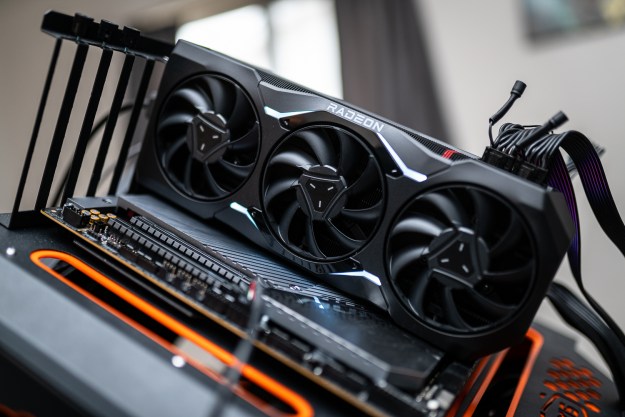
The national stimulus package passed by Congress in February may have been too enthusiastic about spending money on one particular project: figuring out where broadband Internet access is available and how fast it is.
The $787 billion stimulus bill championed by the Obama administration set aside up to $350 million to create a national broadband map that could guide policies aimed at expanding high-speed Internet access. That $350 million tag struck some people in the telecommunications industry as excessive, compared with existing, smaller efforts. The map won’t even be done in time to help decide where to spend much of the $7.2 billion in stimulus money earmarked for broadband programs.
Now it appears the final cost won’t be as high as $350 million — though just how much it will be is unclear.
To ensure the mapping money is used “in a fiscally prudent manner,” the National Telecommunications and Information Administration signaled Wednesday it would initially spend more than $100 million, and then reassess the program.
The agency, which is part of the Commerce Department, said it has received requests for $107 million in funding for projects that would map broadband in individual states over the first two years. The states want another $26 million for various purposes over five years, including steps to encourage broadband demand. On top of that, the NTIA will have to spend more money to collate the statewide maps into a national one.
But while the map should run much less than the $350 million cap set by Congress, the total still looks like it will be far higher than estimates based on the costs of smaller mapping programs in individual states.
In North Carolina, for instance, state broadband authority e-NC spends at most $275,000 per year on maintaining a map of broadband availability in the state, detailed enough to list individual addresses, according to executive director Jane Smith Patterson.
Rory Altman, director at telecommunications consulting firm Altman Vilandrie & Co., which has helped clients map broadband availability in some areas, said $350 million was a “ridiculous” amount of money to spend on a national broadband map.
Even $100 million might be high. The firm could create a national broadband map for $3.5 million, and “would gladly do it for $35 million,” Altman said.
Dave Burstein, editor of the DSL Prime broadband industry newsletter, believes a reasonable cost for the map would be less than $30 million.
The map should reveal what most individuals already know: whether their homes can get broadband, and how fast it is. Officially, the goal for the map is to help shape broadband policy and determine where best to invest government funds. It may also help consumers shopping for Internet service.
However, the map won’t be ready in time to influence the first round of broadband grants and loans funded by the stimulus package. That money will start going out this fall. And the map likely won’t be finished before February’s scheduled release of a national broadband plan being developed by the Federal Communications Commission, which is also mandated by the stimulus bill.
About two-thirds of U.S. homes already have broadband. It’s available to many more, perhaps 90 percent of homes, but the figure is uncertain because of the lack of authoritative nationwide studies. The cable industry alone says it covers 92 percent of U.S. households.
When the Pew Internet and American Life Project surveyed people who didn’t have broadband in 2007 and 2008, it found that most of them aren’t interested in it, find the Internet too hard to use, or don’t have computers. Lack of available broadband was the third most common reason.
Still, there is concern that the U.S. is falling behind other countries in the reach and speed of its Internet connections, and that this might hinder economic growth. Advocates of expanding broadband also worry that some rural areas might never get high-speed Internet because service providers don’t see a payoff in extending their lines there.
Identifying those areas will be a major thrust of the mapping project. The maps will show broadband availability, type (phone or cable, for example) and speeds for each small cluster of homes, roughly equivalent to a city block in urban areas.
Each state’s grant for mapping will go to either a nonprofit or a government agency. Internet service providers have already committed to handing over data about where they have broadband coverage, so the main job will be to collect and translate that information into a map.
Mark Seifert, who is overseeing the broadband grant and mapping programs at the NTIA, offers several reasons why the federal government may spend proportionally more on mapping than some states. For one thing, he said, most efforts that have been done in states have focused on so-called “last-mile” connections that link homes and businesses with the broader infrastructure of the Internet. The NTIA also wants extensive data on that behind-the-scenes Internet infrastructure.
What’s more, since much of the mapping data will come from phone and cable companies, the NTIA wants the information to be independently verified — which could involve knocking on doors to confirm where broadband is and is not available and conducting other on-the-ground checks.
“You can spend less money on a map … but you get what you pay for,” he said. “Data costs money.”
Although the map will not be done in time to guide this round of broadband funding in the stimulus package, it could prove useful for later broadband deployment programs. And it could help set priorities in the years ahead for huge federal programs such as the Universal Service Fund and the Rural Utilities Service, which spend billions of dollars annually to subsidize telecom services.
In addition to the NTIA’s mapping project, there’s a parallel push at the FCC to gather more detailed data on broadband subscribers. Both efforts are designed to aid the Obama administration’s goal of “data-driven decision making” in setting telecom policy, said Colin Crowell, a senior counselor to FCC Chairman Julius Genachowski.
“There is a voracious appetite for all kinds of broadband data,” said Crowell, who helped write the broadband mapping legislation as a staffer on a House subcommittee overseeing telecommunications. “Policymakers have been wringing their hands for several years that we don’t have accurate data on broadband deployment and adoption.”


